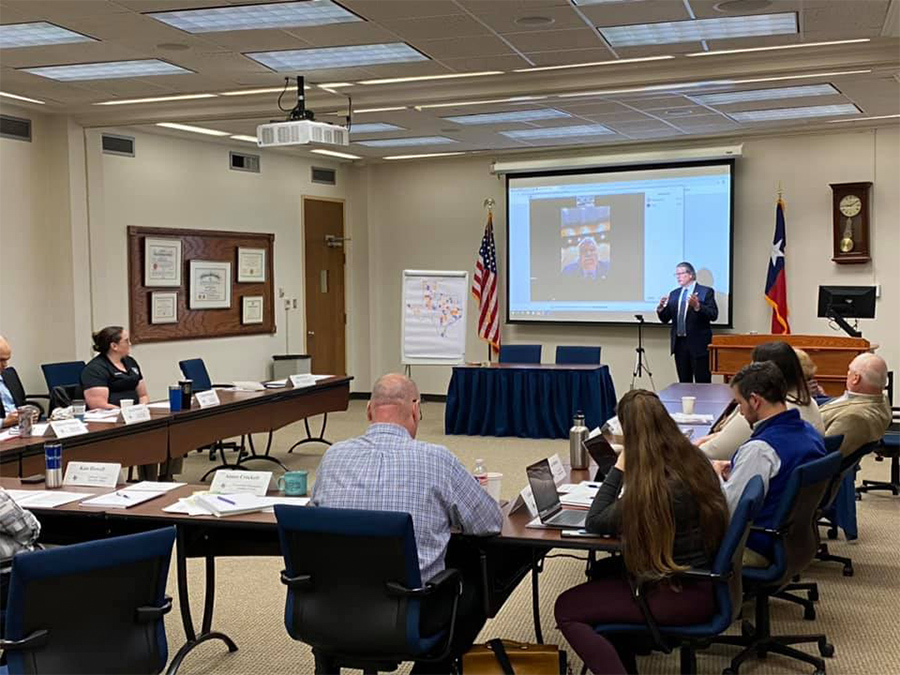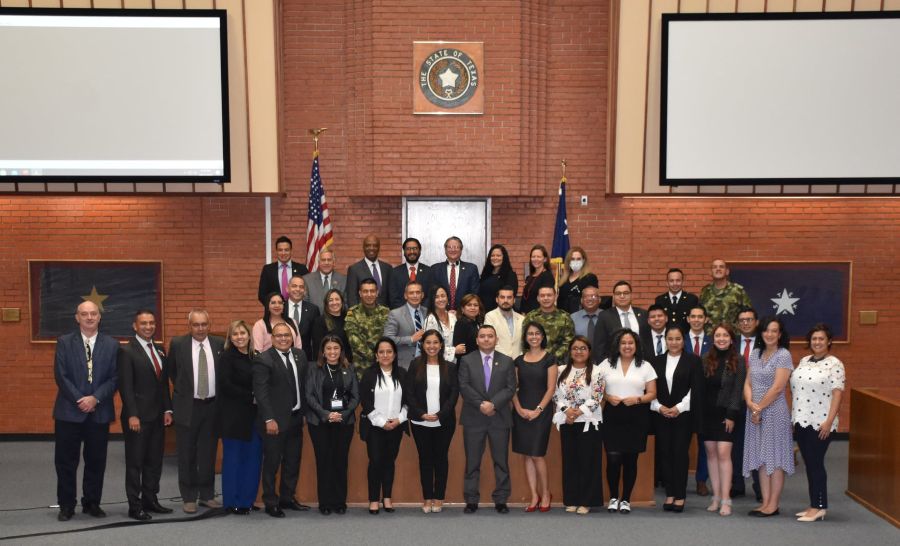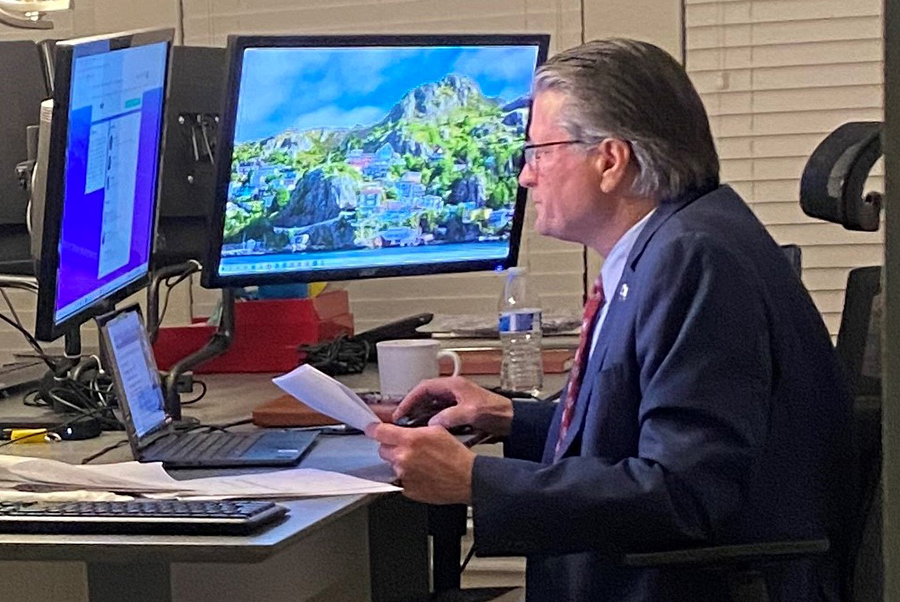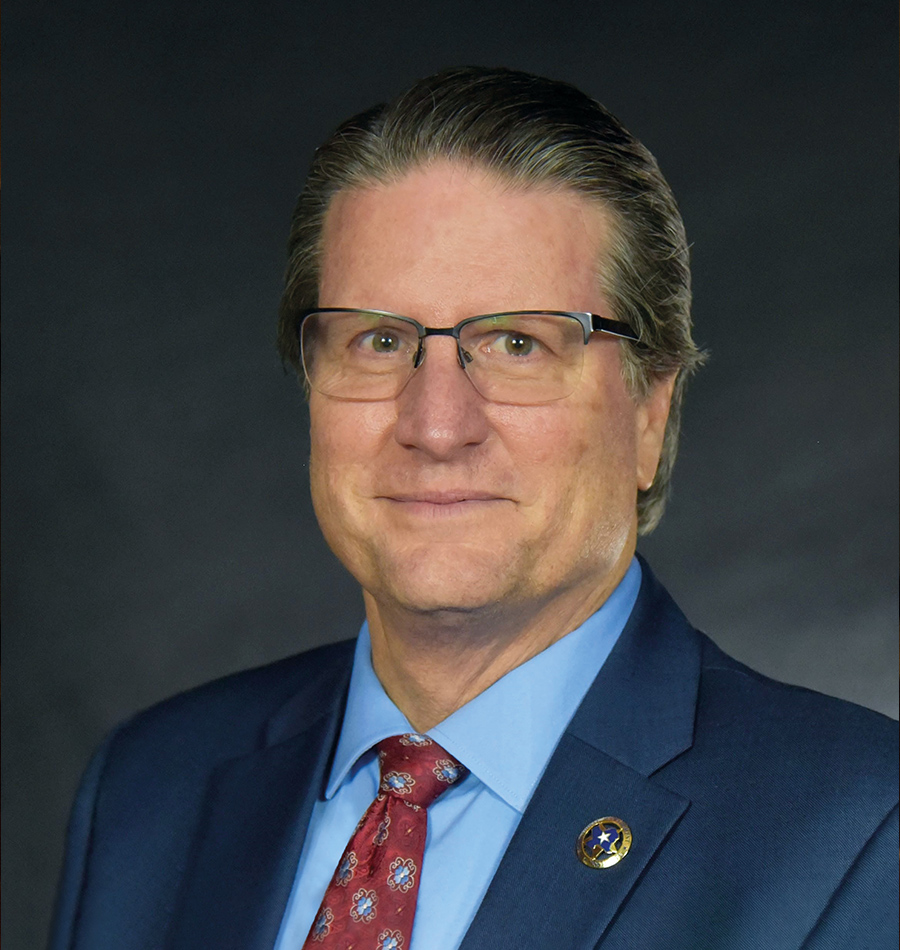Interview
Douglas Dretke
Executive Director, Correctional Management Institute of Texas (CMIT), Sam Houston State University, USA
In this interview, the Executive Director of the Correctional Management Institute of Texas (CMIT) tells us about their work at the local and state level and across the country and borders, including countries in the Caribbean, Latin America and Africa.
After university graduates serve as criminal justice professionals in the field, the Institute continues their training and education; it has contributed to the professional development of thousands of correctional professionals in their different specialities. CMIT programs seek to make a difference by encouraging transformative leadership.
What is the Correctional Management Institute of Texas (CMIT), and what’s its mandate?
DD: The Correctional Management Institute of Texas sits inside the Sam Houston State University Criminal Justice Center, which goes back more than 50 years and has been developed focusing on four pillars: continuing education, research, technical assistance and continuing/professional education.
Specifically, it develops and delivers professional education and issuespecific training programs and conferences for criminal justice professionals who serve across the vast Corrections spectrum. This range includes juvenile and adult probation, pre-sentence incarceration (jails in the US), and then sentenced incarceration, our state prisons.
We develop and deliver many different programs, typically focused on leadership, that enhance professionalism, focusing on maximizing the outcomes of our correctional and criminal justice systems.
After university graduates serve as criminal justice correctional professionals in the field, our Institute picks up. It continues to provide them with opportunities for professional development in their different specialities, particularly as they start to move into leadership roles.
As far as target groups are concerned, we first focus on correctional professionals here in Texas. We provide a series of leadership programs for supervisors, our new probation directors, and our jail administrators
and superintendents.
Additionally, we deliver a substantive number of programs at the national level. Twice a year, we provide a program for wardens (responsible for the management and leadership of prison facilities) in collaboration with the North American Association of Wardens and Superintendents.
Furthermore, we collaborate with the American Jail Association to provide the premier jail leadership program in the United States. We fully developed and delivered this program four times a year here on campus.
Moreover, we deliver several Conferences around many of the very issuespecific challenges that we face in the criminal justice/corrections sector, including working with people who suffer from mental health illnesses.
We also organize an annual conference concentrating on women who serve in correctional agencies and leadership roles. We deliver conferences on gang management and the tremendously challenging dynamics of substance use and abuse by people who fall into our custody and under our supervision. Many of our participants come not only from Texas but from other states around the nation.
Finally, we have the immense honor to deliver an international Executive Leadership program working with the US Department of State.
I started in a very hierarchical, paramilitary, and top-down system. And often, whatever position we served, if we received direction or an order, we didn't question it. In contrast, today’s leadership must be much more responsive and inclusive, making it incredibly strong and rich.
How are CMIT’s leadership programs developed? Do they undergo adaptations according to needs?
DD: All our programs are constantly evolving. I was still serving with the prison system when the Institute first developed a leadership program for mid-level correctional supervision roles. The Institute built this program for mid-management not only with its faculty but also with several of us who served in executive positions.
Since I’ve been here, we’ve constantly evolved that program based on participant evaluations and our advisory groups for the last fifteen years.
We look at our curriculum and constantly identify areas to sharpen our focus on to keep the program current. Also, leadership literature continues to evolve in what effective leadership looks like in our efforts to maximize
staff performance.

How do you measure the impact that the training programs the CMIT provides has in the field and on the job for those correctional professionals who attend the programs?
DD: We rely very heavily on evaluations from the participants themselves. They provide us insight into what we’re delivering and what we can do to be more effective in serving the participants’ needs. In some of our programs, we will follow-up, a couple of months after the professionals return to their work environment to get their feedback. Right now, for instance, we’re conducting an extensive evaluation of our National Jail Leadership Command Academy with one of the University’s PhD students.
More precisely, we are conducting extensive interviews with the executive leadership of the many different agencies that sent participants to the program. We are specifically looking at leadership behavior development
after attending the program. In addition, we work very closely with different advisory groups. We bring in top tier professionals representing the different components of our corrections profession to look at the critical issues that need to be a part of each program. We also bring in expertise from across our state or the country to be part of the pool of our faculty.
Our training programs are evidence-based, and this is the main element that shows us that what we are doing can make a difference.
Our main goal is to take the participants in our programs out of 'status quo leadership' and move them towards transformative leadership.

JT: You have been leading CMIT for 15 years. Before that, you have worked for 26 years at the Texas Department of Criminal Justice. There, you started as a correctional officer, moving up through the ranks to director of the
Prison Division before retiring in 2006 and then coming to CMIT. During this period, many changes have taken place in the correctional sector.
In your opinion, what main changes and evolution have there been in
Corrections? And to what extent has CMIT followed this evolution
over the years?
DD: After I graduated with a degree in Criminal Justice and Criminology, and as I served in the Texas prison system, I was always a student of leadership, not only as “an observer”, but then as I, myself, evolved in
my leadership role throughout the agency.
I started in a very hierarchical, paramilitary, and top-down system. And often, whatever position we served, if we received direction or an order, we didn’t question it. In contrast, today’s leadership must be much more responsive and inclusive, making it incredibly strong and rich.
By asking questions like “How do we include our staff, their voices and perspectives in our decision making?” and taking the importance of research into account, we become much stronger critical thinkers. Those factors also make us greatly effective in leading extremely complex correctional agencies. Over the years, we’ve seen substantive movement and changes in what literature teaches about effective leadership. I think those are the kind of things that we try to build into the leadership programs that we provide at the Correctional Management Institute of Texas.
JT: Certainly, COVID-19 has brought many challenges and maybe also some opportunities.
What adaptations and responses did the Institute have to develop because of the pandemic crisis?
DD: When the crisis started taking hold and hitting us, we had to shut down. A lot of our programs and our travel just stopped. Nevertheless, as we realized this pandemic was not short term, we maximized our capacity to deliver programs virtually. Our approach was to simulate classrooms through our virtual program. Through much of the pandemic, we delivered a whole series of programs live, face-to-face, through a video conferencing
platform. We would limit each class to around twenty participants so we could see everyone’s face, responses, reactions, and we could be very interactive. During the pandemic, we’ve also delivered some of our international programs virtually. Now we are going back to some level of face to face. Still, at the same time, we certainly will continue to use the virtual environment when that’s appropriate.
As we realized this pandemic was not short term, we maximized our capacity to deliver programs virtually.
Do you tackle the topic of digital transformation and how technologies, in general, can be used to support leadership across
the correctional arena?
DD: Many of our programs challenge leadership to look outward, through a transformative lens, to what they need to do to enhance their capacity and ability to achieve their mission and improve their outcomes.
That, in itself, motivates them to participate in activities that would build their knowledge in how to maximize the use of technology.
At the conferences that we organize, we motivate participants to be active through our associations, like the ICPA or the ACA. When people gather into those associations, that’s when they see some of the remarkable things that you might be able to do through technology.
Moreover, in several of our programs, especially our international ones, we encourage participants to think of a capstone project that develops into an action plan. And a lot of those projects are very much around developing and enhancing technology that would improve their [correctional] system.
From a technical assistance perspective, we work very actively with people who come through our programs to help them build that capstone project and implement that action plan.

In addition to training programs, CMIT also plays other roles, namely in terms of Technical Assistance and Research. How do these activities enhance Corrections across the state and the nation?
DD: In our Institute, we have over fifty professors that are part of the College of Criminal Justice. Having one foot in the world of criminal justice professionals and another in the academic side allows us to serve a unique role. If faculty professors have research questions, we can link them with the different leadership in the field that can facilitate research.
On the other side, when our criminal justice professionals have questions, we can connect them to our professors to provide that research. One of our faculty members here at Sam Houston State University serves as our Research Director. She works with the different agencies and with our other researchers to really enhance the role of research as it would apply to our practices, policies and procedures.
Technical assistance can also be research-based when answering a request from an agency for some level of research that we might be able to provide. It can also be a policy question. Technical assistance can take several different avenues, from research to consulting to leadership development. Somebody has or is exploring an idea or question; we can assist them with that, connecting them to other [correctional] agencies that might have some expertise in that. And we can help fund some of that interaction, be it nationally or internationally.
We like to think that the research that we support would impact our corrections profession, regardless of where we serve.
JT: CMIT is doing some work with the US Department of State, providing leadership training for senior and executive correctional leaders from several countries.
What can you tell us about the work CMIT is doing abroad?
DD: The US Department of State was interested in providing executive leadership and senior leadership training to the many different countries that they work in. Because of our work, we have been referred to them by different people across the US. And we absolutely saw this as a wonderful opportunity to work with colleagues from around the world. Our focus is to provide the leadership development that could have a very positive impact upon their agencies, their communities, and their countries.
The first program we delivered was to several Caribbean nations, and we were able to do that in English. But then our second program was with Colombia, and we did it entirely through simultaneous translation. It worked flawlessly. Then, Morocco was scheduled to come here, but then COVID hit and, instead, we delivered that virtually. Now, we’ve gone back live with Mexico, Colombia, and again with Guatemala.
As we build those programs, we work very closely with the countries, agencies, and state departments to take our curriculum and make it very specific to their needs. We are very sensitive in our programming to never assume that we know what’s best for them. They are the experts in their agencies and their countries.
Our approach focuses on correctional leadership concepts, practices, best practices, and what our research informs us about maximizing outcomes. And then, through our interactions, we challenge participants to think about how that might apply within their agencies, context and culture. We’ve now started going back face to face. Our vision is to continue the program and have both the face-to-face and the virtual capacity. Our faculty include executive correctional leadership from across the United States, providing participants with a unique and valuable experience.Before the US State Department programs, we had already engaged in considerable international interaction.
For many years, we’ve had interactions with the Czech Republic and the Polish Prison Services, where our Institute would fund a group of professionals to go and visit those different systems. Then we host a group of professionals from their system to visit some of our institutions and engage in discussions.
Regarding professional development, the more we expose ourselves to different systems, the more we will gain insight into different approaches.
And these can help with the many challenges we face within corrections and criminal justice. In some of our programs, we include sitting down with our judges to talk about different approaches to community corrections and focusing on alternatives and diversions to incarceration.
So, I’ve been a long proponent of the value of international interaction from a professional development perspective.
Douglas Dretke
Executive Director, Correctional Management Institute of Texas (CMIT), Sam Houston State University, USA
Douglas Dretke has served as the Executive Director of the Correctional Management Institute (CMIT) for the past 15 years. In addition, Mr Dretke serves as an Adjunct Faculty member for the College of Criminal Justice at SHSU, teaching Correctional Systems and Practices. Before CMIT, he served 26 years with the Texas Department of Criminal Justice, becoming the director for the Correctional Institutions Division. He is active with several professional associations, including the American Correctional Association. Moreover, he serves as a Board Member of the North American chapter of the International Corrections and Prisons Association (ICPA). He received a BS in Criminology and Corrections from SHSU and a MA of Public Administration from Texas A&M University-Corpus Christi.


